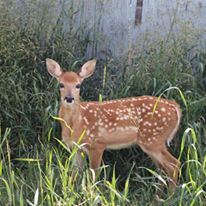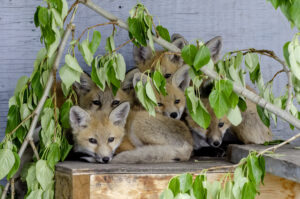Statistics show over 60% of North American households has at least one companion animal in their home.
In homes all over the world companion animals are thought of and treated as one of the family. Households invest a ton of time and money on the healthiest foods and snacks, stimulating toys, fluffy beds, the safest enclosures, and the best daycare available.
The majority of homes have dogs and cats as a companion animal however, modern households have many other kinds of animals living in their homes. Hamsters, birds, fish, lizards, bunnies, snakes, and a variety of other animals are loved by families as their fur/feather/scale/etc babies.
Depending on the kind of animal that families have in their household, there are many things that need to be considered. Animals of all kinds require adequate housing, nutrition, nurturing, enrichment and training to keep them healthy and safe within the home. For example, cats require specific climbing equipment and stimulating activities, birds require enclosures with a proper perching spot, and dogs require specific training and guidance. They all require comfort, respect and love to help them thrive.
When the care mentioned above is absent, companion animals may show stress by clawing the furniture, defecating in places they shouldn’t or by becoming quiet and reclusive or fearful or aggressive. When this happens chaos ensues and the home becomes neither safe nor enjoyable for anyone.
As we take care of companion animals and provide them with the physical needs and training necessary to live happily ever after in our homes, they still maintain their natural instincts. We train our dogs to come, sit, stay and much more. Many learn what is being asked of them, however each breed will have a tendency toward their specific natural abilities. For example, a retriever will sit and stay but the second they are allowed to move they will be looking for something to retrieve.
Song birds will sing, cats will stalk, lizards will sit on a warm rock, and fish will continue to swim around their tanks. These special abilities and natural instincts are built into each animal from the beginning to support the survival of their species. Animals can be taught certain behaviours, however, natural instinct remains in each and every animal.
Although there are many different animals that people are able to care for as part of their family, there is a world full of animals that belong only in the wild. Each with their own set of instincts needed for their health and survival.
For example, If a fawn is kidnapped and brought home to live with someone who thinks the fawn is orphaned, the fawn will not be getting the proper nutrition required to grow up strong and healthy, and will miss out on the necessary training she would have received from her mother when living in the wild. The fawn will become habituated and grow up not understanding the dangers of living in the wild, making her unable to take care of herself once the person who took her realised that the fawn had become too large to care for and keep safely.
Deer can grow to anywhere between 54 and 136 kilograms and their natural instinct is to either run or fight when they feel threatened in any way. When their natural instinct kicks in they can cause injury and possibly death to anyone near.
Don’t try to help or rehabilitate wild animals on your own. If you find an animal in need of help please contact Alberta Institute for Wildlife Conservation and we will be happy to provide assistance.
Let’s work together to continue to care for Alberta’s wildlife.
By Tracey Paluck, AIWC Volunteer






